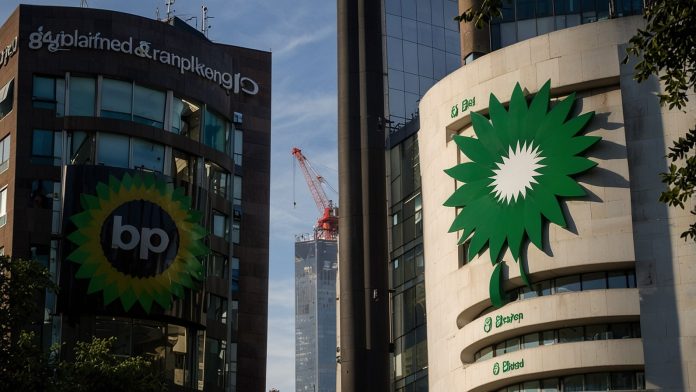The FTSE 100 oil and gas giant, BP plc, has calmed investor jitters today by announcing third-quarter profits of $2.3 billion, which is higher than the expectation in the face of a savage oil price spill and erosion in the refining margin.
Early morning gains showed that the shares were on the rise, a sign that speaks of the ability and determination of the firm to make shareholder returns in an unstable energy market.
Q3 Earnings Surpass Forecasts with Headwinds in the Sector
The update released by BP also depicted more grit than glamour: underlying replacement cost profit came in at 2.3 billion in the three months to September 30 against the 2 billion consensus and the lowest since the pandemic. The fall of the price of Brent crude to below 70 a barrel and a 20% squeeze in refining crack further flattened rivals, but the upstream discipline and trading savvy at BP eased the blow.
Guidance of the energy major remains unchanged over the entire year, with a forecasted back-of-the-envelope profit of 13-15 billion, whereas the upstream production remains at 2.3 million barrels of oil equivalent per day.
It also increased by 2.1 per cent to 434.30p with shares (LSE: BP.) shrugging off a 15% year-to-year drubbing, and bargain hunters set their eyes on the dirt-cheap 5.8x forward P/E of the stock.
The volume increased slightly, and the institutional flows by Aviva and Standard Life reinforced the belief in the pivot of BP with CEO Murray Auchincloss. In a storm BP, the stable ship, joked City analysts, as the company reinvests in 1.75 billion quarterly buybacks up to 2026.
FTSE 100 Holds Gains as Energy Stabilises
The FTSE 100, which was gearing high at 9,720 following the record of yesterday after being driven up by HSBC, found a bulwark in the strength of BP. Shell and Harbour Energy followed the 1-2% improvement, which countered the ARM Holdings technology drag. The benchmark of London, which is up 19 per cent a year, is making a fortune on such rotation in the sector, with its 12 per cent of energy weighting giving ballast.
Continental markets backfired: the DAX dropped 0.4% on export misery, and the CAC in Paris followed suit. WTI crude across the pond regained hope, at $68, lifted by OPEC+ cut rumours and Middle East anxieties. However, the CBI factory orders in the UK sank to a 2020 low, which is an indicator to be wary of tomorrow, with the CPI.
The story of BP is familiar: the proportion of low-carbon investments, such as offshore wind and hydrogen, constitutes 55% of the revenues; the group is transitioning to net zero, which is the choice of ESG funds during the shocks of the Trump tariffs.
Upstream Strength and Buyback Pledge Anchor Resilience
Upstream operations, which include North Sea to Gulf of Mexico, provide the core of the business at BP, in which it has been able to bring in 1.8 billion profits, an increase of 5 per cent sequentially due to rising gas realisations. The wildcard Trading desks were at the winning end with a net of 800 million, which balanced the downstream blues whose refining profits had decreased by half to 500 million.
The playbook of Auchincloss works: 2 billion of capex cuts, aiming at 20% returns on new plants, bioenergy, such as sustainable aviation fuel, scales to 500,000 tons a year. Asia-Pacific LNG contracts, which are fixed at a premium rate, reinforce the moat against OPEC floods.
The yield is enticing at 5.2, and the total return projection (30) in 2025 will be a combination of 15 capital upside and dividends. You are filthy cheap at 5.8x earnings, beef, roar, proclaim bulls, and when the free cash flow can payout 3 times as much.
Future Prognosis: Oil Volatility Meets Green Horizon
BP projects as much as 16 billion in profits in 2026, given 70 oil prices, and low-carbon investments will rise to 5 billion annually. Tailwinds: EV charging network to 10,000 sites in the UK and geopolitical premiums. Perils? A long period in the below $60 slump would reduce upstream 10% yet at 70% of output, there are hedges.
To investors, BP has a comeback case to make: since January, share prices have risen by a quarter and by consensus estimates up to 25 per cent. Buy the fear, o, buy the fear, sings the chorus.
Shell Traces BP in Energy Revolt
Competitor Shell (LSE: SHEL) gained 1.5% on course to make a 6.5 billion profit in Q3, but BP steals the spotlight, with its lean balance sheet net debt at $22 billion, giving Shell a more spacious look. They can win back the FTSE energy throne.
Fed, Fiscal Fog Braces Markets
FTSE future strengthens towards the end of October 29, although the rate signals by the Fed, and the Reeves budget spectre, shadow it. As BP survives, the hydrocarbon heart of the UK is pumping hard and has been driving the speculations of diversified dividends during turbulent times.



 Bitcoin
Bitcoin  Ethereum
Ethereum  Tether
Tether  XRP
XRP  USDC
USDC  Wrapped SOL
Wrapped SOL  Lido Staked Ether
Lido Staked Ether  TRON
TRON  Cardano
Cardano  Avalanche
Avalanche  Toncoin
Toncoin